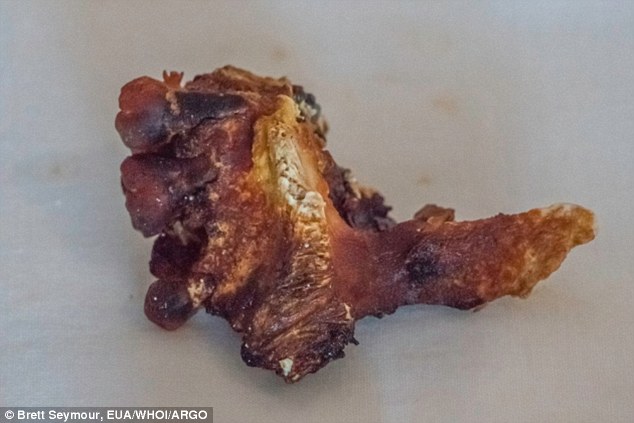Information
Human skeleton discovered at Antikythera shipwreck after more than 2,000 years at the bottom of the sea
Buried beneath sand and the fragments of ancient pottery, researchers have discovered the 2,000-year-old remains of a sailor who died upon the ill-fated 'Antikythera ship.'
Archaeologists have investigated the famous shipwreck off a tiny Greek island for which it's named for over a century, revealing a trove of remarkable artefacts – including the mysterious 'Antikythera Mechanism,' thought to be a 'guide to the galaxy.'
Now, this latest achievement could allow the researchers to conduct an unprecedented DNA analysis of human bones that have survived thousands of years at sea, providing a glimpse at life in the first century BCE.
Scroll down for video

Buried beneath sand and the fragments of ancient pottery, researchers have discovered the 2,000-year-old remains of a sailor who died upon the ill-fated 'Antikythera ship.' A partial skull, including three teeth, is pictured
Researchers from the Hellenic Ministry of Culture and Sports and the Woods Hole Oceanographic Institution (WHOI) found a human skull, including a jaw and teeth, along with bones from the arms, legs, ribs, and other remains on August 31, 2016.
And, they say other parts of the skeleton still lay buried in the sea floor.
The discovery marks the first time researchers have discovered a human skeleton at a shipwreck site in the era of DNA analysis.
'Archaeologists study the human past through the objects our ancestors created,' said Brendan Foley, a marine archaeologist with WHOI.
'With the Antikythera Shipwreck, we can now connect directly with this person who sailed and died aboard the Antikythera ship.'
It's thought that the wreck of the Greek trading or cargo ship occurred around 65 BCE in the Aegean Sea, and despite thousands of years below the surface, many of the bones are still nearly intact.
ANTIKYTHERA SHIPWRECK
Archaeologists say the ship crashed off the Greek island of Antikythera in the Aegean Sea around 65 BCE.
It may have been a trading or cargo ship, or a massive grain carrier.
The wreckage was first discovered in 1900 by Greek sponge divers, and is the largest shipwreck ever found.
Excavations over the last century have led to the recovery of more than 300 objects, including the Antikythera Mechanism and the skeletal remains of passengers and crew.
The most recent discovery marks the first time researchers have discovered a human skeleton at a shipwreck site in the era of DNA analysis.
This means they may be able to identify the ethnicity and geographic origin of the victim.
Read more: http://www.dailymail.co.uk/sciencetech/article-3797258/Human-skeleton-discovered-Antikythera-shipwreck-2-000-years-bottom-sea.html#ixzz4KmQ3IMId
Follow us: @MailOnline on Twitter | DailyMail on Facebook
Category: English
News
Information
Key words:
